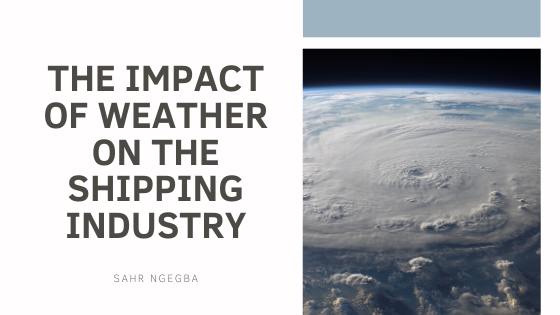Did you know that between FedEx, the United States Postal Service, and UPS, that 534 million pieces of mail and packages are shipped every day? Of course, this means that weather can cause major problems with them getting to their appropriate destinations. This also drives up the cost of shipping.
You also have to figure that a weather pattern halfway around the world could affect the way that objects are transported between countries. That means, depending on how far your package will be traveling, weather from the previous week on the other side of the world could be a factor in your delivery time.
Because transportation corporations can’t really do anything to control natural phenomena, these companies lose approximately 3.5 million dollars a year. Here are some of the ways that weather can affect different transportation channels:
Trucking over Land
When most of us think of shipping, our minds automatically think of trucking. Because trucks travel great distances across many different types of terrain and across different climates, they report to be the mode of shipping most affected by the weather.
Just think, in colder areas, truckers can be impeded by heavy snow and have to worry about slipping on black ice.
In warmer areas, such as the subtropical areas of the United States, large amounts of rainfall are likely to cause flooding which may block roadways. Both dispatchers and drivers work hard to find alternative routes so they will not be delayed too much.
But, they must worry about more than just being tardy. They must also keep their safety in mind as well. They should never be forced to drive in dangerous storms or in areas of low visibility to make a deadline.
Flying by Air
Weather, of course, has been known to delay passenger flights. However, no plane should have to take off when the weather is not at its best.
As such, weather has been known to delay freight flights. This is especially true in the mid-latitudes where thunderstorms are prevalent.
Airports that are located in coastal areas or high atop mountains are also prone to have visibility issues during morning flights. When early flights are delayed, it can affect all deliveries for the rest of the day.
High-speed crosswinds can also lead to several delays in the name of safety.
Sailing on Water
On a ship, visibility may be an issue. However, the bigger threats come from wave heights and high-sustained winds.
The winds and squalls can be severe and this is why the associated waves can be a serious issue. This is true even when they are not dealing with a tropical system, such as a hurricane.
Typically, when the wind speed is faster than the waves cresting, the energy is transferred into creating higher waves.
How the vessel handles these higher waves and the wind is dependent on its size and weight. While heavier ships are safer, the crew will have to worry about the weight of the freight, and securing the cargo tightly. However, in general, lighter ships have a more difficult time in choppy waters.
Shipping goods is a critical part of many businesses’ general operations. This means that any delays due to the weather, whether on the sea, in the air, or over land, need to be addressed before they become an issue. That is why it is critical for businesses to keep an eye on the weather forecasts around the world.

